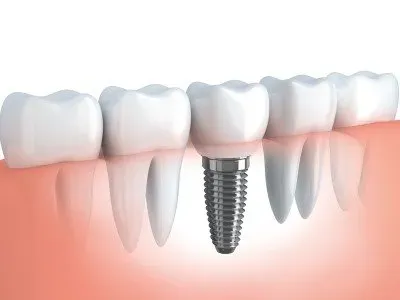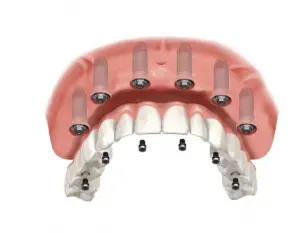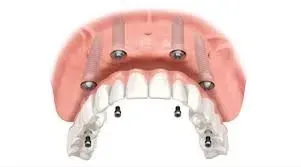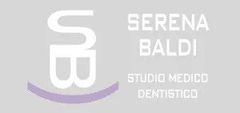SURGERY AND IMPLANTOLOGY IN FLORENCE
oral surgery
We carry out various types of oral surgery at the Baldi dental practice, which are related to various diseases.
Simple and complex dental extractions: we only surgically remove teeth when a cure is not possible because the tooth has been affected by various types of disease. The tooth is removed from the alveolus, which is the cavity it sits in, when leaving it in place would create greater damage.
Teeth extraction - a professional's opinion: Extracting wisdom teeth (also called avulsion) can be carried out as a preventative measure to safeguard the correct position and correct alignment of the other teeth. In addition, taking out wisdom teeth at an early stage (GERMECTOMY) may be recommended by the surgeon to limit any risks and complications that could instead arise by removing a third molar already fully formed in the adult patient. In other cases, it may prove to be inevitable such as in case of severe tooth infection such as
cavities,
pulpitis,
tooth abscess or
granuloma, chronic toothache caused by pressure from wisdom tooth on adjacent teeth, dental
pericoronitis (a partially erupted wisdom tooth can give rise to a very annoying and painful acute gum inflammation).
Periodontal procedures: this type of procedure can be considered necessary to help treat periodontal disease. Through an incision on the gum, the surface of the tooth root and the deepest part of the pocket where the bacteria is nested can be reached, and the infected part is cleaned by sanitising the area.
Removing oral cysts : A cyst is an abnormal growth in a part of our body and can form anywhere in the body, including in the mouth. It is basically a small sack containing tissue. Sometimes it is filled with air, others can be filled with soft or liquid material. Cysts generally develop in soft oral tissues such as the gum and lips or within the jawbone. They usually grow slowly and may cause jaw pain but in most cases, the cyst is painless and does not always show obvious signs. It is therefore often diagnosed by chance during a routine visit to the dentist, who notices abnormal swelling or through x-ray examinations. Whatever its origin, it will be necessary to perform an enucleation to remove the cystic sac and prevent it from reforming.
Dental implantology:
with modern surgical techniques it is possible to restore the missing or removed tooth or teeth to rehabilitate the right oral and aesthetic functions. This is done by surgically inserting special devices in the mandibular or maxillary bone to then fix a prosthetic element (crowns, bridges, Toronto Bridge prostheses).
Bone grafts and regeneration: these are performed when the bone crest depth is poor, or after a procedure such as an extraction or sanitising infected areas. It is then necessary to fill the void that has been created. Regeneration is carried out to increase bone volume in order to place the implants in a stable site. Among this type of procedure there is the maxillary sinus augmentation, a surgical method that is used to increase bone depth within the molar and upper bicuspid areas by using the maxillary sinus cavity to implant osseointegration biomaterial.
Labial and lingual frenectomy : It takes very little time to carry out a frenectomy and consists in surgically cutting the frenulum with a scalpel or laser. It is a quick procedure, which is carried out in the clinic.
This small procedure may be considered necessary when a patient's frenulum is altered in such a way so that normal and physiological lingual or labial mobility is compromised, which then means that more effort is needed to carry out all related functions and with non-physiological functional compensations. The lingual frenum may be shorter than normal, more fibrous and thick or fixed abnormally to the floor of the mouth. The labial frenulum, on the other hand, must be taken into consideration when it causes a gap (diastema) between the upper central teeth. However, it is advisable to carry out the surgery after or during orthodontic treatment and re-educate correct speech by means of therapy sessions.
Titanium dental implants, for example, are completely hypoallergenic and help in restoring both mouth and aesthetic look to normal working order, without using any of the natural teeth near the implant sites. Also, by using the modern dental implantology techniques carried out at the Baldi Dental Practice in Florence, we minimise any post-operative complications and trauma.
IMPLANT PROCEDURES
The implants can also be used with patients through modern surgical regeneration techniques where there is reduced bone tissue, such as sinus augmentation where an efficient amount of bone volume is restored, stably fixing the implants by means of osteoconductive materials.
This condition must be diagnosed by specific radiological investigations using computed axial tomography (CT scans) which is called low radiation emission Cone Beam CT in dentistry.
There are different methods available because dental implantology offers a range of surgical options which need to be evaluated on a case by case basis. We may position the same implants differently, according to the severity of each specific case, and we always try to reduce the time it takes for the implant as well as the recovery time.
If there is a pre-existing condition, then it is also possible to insert implants at "immediate load ", a surgical technique that allows a temporary prosthesis to be placed on an implant within a few hours of surgery. This greatly reducing patient's discomfort and is much better for both the look and working aspects of the implant. It also avoids having to wait a certain amount of months usually needed before the "traditional" implantology procedure.
One critical reason why this technique may be performed is because there is a good amount and good quality bone in available to make the surgery a success. Both single and multiple implants can be loaded and even the entire arch can be restored using the Toronto bridge. This is a fixed prosthesis that is fitted on the implants through the "all on four" method, i.e. on 4 screws and can replace up to 10-12 teeth.
If you would like a prosthesis that is even more stable, you can also use 6 screws (All on six).
Fill in our contact form to make an appointment










